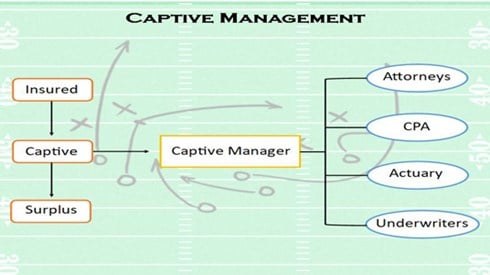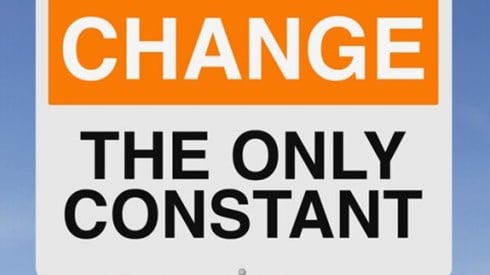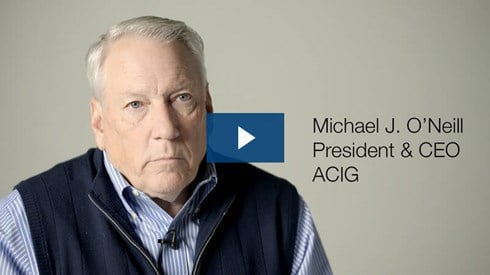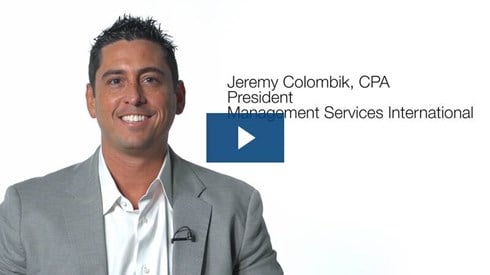Captive Insurance: Why or Why Not?

Karin Landry , Spring Consulting Group | September 29, 2023

To go captive or not to go captive? That is the question (in this case).
The advantages of forming a captive insurance company are numerous and significant, and they will be covered in-depth in this article. However, it is important to note that while many organizations are reaping the benefits of a captive structure, as with all business decisions, a cost-benefit analysis is a must before making any decisions. While the rewards are real, the resources needed to successfully establish and maintain a captive program should not be overlooked.
Before you jump in, or shy away from, taking the captive route, do your due diligence and read about the most noteworthy pros and cons involved, outlined below.
There are numerous factors to contemplate when deciding whether or not to form a captive insurance company. The following summarizes some of the advantages and disadvantages of captive ownership to consider when deciding whether to form a captive insurance company or not.
Reasons To Form a Captive Insurance Company
Reduced Reliance on Commercial Insurance
As the captive matures, its surplus grows, giving it greater capacity to retain risk. Increased surplus also creates new opportunities for accessing reinsurers and entering pooling arrangements, which further increase available capacity.
Reduction of the Costs of Risk Management
The price of insurance coverage purchased in the conventional market typically reflects a
significant markup to pay for the insurer's acquisition costs (including marketing and broker
commissions), administration, and overhead, as well as profit to the insurer. The fact that
premiums are paid in advance represents a lost opportunity to earn investment income.
Establishment of a captive cannot eliminate these costs, but it can reduce them. The extent of
the reductions will depend on the captive's own loss experience, the claims handling costs, and
the degree to which the captive promotes cost consciousness and efficiency in the parent.
Stabilization of Pricing
Where the insured enjoys a stable and reasonable loss experience from year to year, a captive affords the ability to price insurance coverage accordingly. By contrast, the conventional insurance market will often set prices in relation to broad industry classifications and thereby fail to reflect key differences in loss experience among individual insureds. The result is price volatility based on general market conditions and the actions of other insureds. In addition to the stabilization of pricing over time, there are also advantages to be realized in terms of the organization's financial planning and control functions.
Provision of Cover Where Otherwise Unavailable
From time to time, the conventional market is unwilling or unable to provide cover for certain risks, especially for liability and casualty loss. The establishment of a captive (or group captive) to write such lines or to provide additional capacity can be an answer to these market problems. Coverage, which has at times been unavailable or difficult to obtain on satisfactory terms, includes product liability, professional liability, oil pollution, hazardous waste, and labor strike insurance. Whenever insurance coverage is unavailable or overpriced, the feasibility of a captive is enhanced.
Access to Reinsurance Markets
Because reinsurers generally deal with insurance companies, a captive affords direct access to the international reinsurance markets. In bypassing conventional insurers, the insured is spared markup costs. The savings associated with eliminating these costs will frequently outweigh the incorporation and other startup costs of a captive.
Improved Cash Flow Benefits
The ability of a captive to generate investment income from unearned premiums received is often a critical advantage in forming a captive. This is especially so where premiums are paid in advance and losses are paid out over a lengthy period of time (which, in turn, depends on the kinds of risks insured). To the extent investment income can accumulate in a tax-free domicile, there will be additional funds available to pay losses and a corresponding reduction for further funding of the captive.
Reduction of Government Regulations and Interference
By contrast to the rigorous insurance regulation in most industrialized countries, a domicile can provide a less onerous, yet responsible, regulatory framework. This has been described as a system of shared regulation, whereby the regulated cooperate with a view to achieving the most appropriate level of policyholder protection while at the same time permitting the captive to grow and prosper.
Ability To Customize Insurance Programs
A captive has complete freedom to insure any risk it chooses and to customize the terms and conditions of its policies. This can lead to improved loss control efficiency and promote greater awareness of the factors that commonly give rise to losses.
Formalize the Allocation of Deductibles for Self-Insurance Retention within a Corporation
A medical facility may want to allocate costs to locations by loss ratios while a real estate partnership may need to bill each partner its respective cost (rather than an arbitrary allocation). With a captive, it is easier for smaller entities to justify these expenses.
Underwriting Advantages Inherent in Captives
A key advantage of a captive is its ability to provide management information across a spectrum of disciplines. Among these is an ability to analyze historical claims information. When feasibility studies are undertaken, it is not uncommon to find that precaptive loss experience is unreliable.
Depending on the risk involved, a wide range of sophisticated, analytical tools can be employed to help calculate IBNR (incurred but not reported) losses. On a day-to-day basis, simple spreadsheets can be maintained and used.
These tables can be enhanced to show numbers of claims and differentiate between paid and outstanding amounts so that the cash flow effect may be monitored. It's simple and effective when its limitations are understood.
- The composition of the portfolio may have changed over the years.
- The method of reserving may have altered over time, especially because it is often based on human, not scientific, judgment.
- Deductibles may vary year to year, distorting the information.
- A yearly security loading variable that tries to track judicial inflation, currency movements, and the unexpected may have been added.
A significant advantage in maintaining this type of record is its appeal in explaining to noninsurance people the method of determining IBNR levels.
Because of the uncertainty associated with tail business and risk of a catastrophe, it may be appropriate for a captive to purchase aggregate excess of loss or stop-loss protection. In some cases, it may be necessary to engage the professional services of a qualified actuary. In either event, be aware of and monitor what is happening to the captive in order to maximize its value to the parent and to support a prudent assessment of future premium requirements.
Opportunities for Improved Claims Handling and Control
A captive is also free to establish its own claims handling policies and procedures. This has obvious advantages, such as the reduction of the time taken to process and pay claims.
Creation of a Profit Center
To the extent a captive may offer insurance coverage to unrelated customers (sometimes in response to tax planning objectives of the captive), it will have diversified into open market operations, not unlike conventional insurers. Although there are special risks and capital requirements associated with engaging in such business, doing so will have the potential to generate additional profits.
Tax Advantages
While professional tax advice should be sought before making the decision to form a captive, there may be certain tax advantages associated with such a decision. These might include the tax-favored accumulation of underwriting and investment income (which may depend on, among other factors, the domicile of the captive, the residence or citizenship of the captive's owners, or the source of its income). Another advantage may be the deductibility of premiums paid for by the insured for tax purposes (as the premium expense of the insured).
Also, if a captive qualifies as a true insurance company for tax purposes, then unlike other corporations, it can deduct currently a "reasonable and fair" loss reserve for unpaid actual losses incurred. Finally, state premium taxes otherwise payable in a commercial insurance program may be reduced. Although tax advantages may be of significance in the decision to form a captive, they should never be the prime motivating factor.
Ability to Direct Investment Options
Generally, when you purchase commercial insurance, you do not control the investment of the premiums. A captive can afford the opportunity to direct these investment choices.
Some Possible Drawbacks To Forming a Captive Insurance Company
Administration
Increased Administration Burden
The captive owner(s) will be ultimately responsible for such items as claim administration, loss control, and underwriting. Additional time, money, personnel, and management commitment are required for these services. Such costs may be offset by contracting out administration to captive management companies. However, these costs will reduce the premium savings expected in comparison to conventional insurance companies.
Delegation
Where a captive management company is engaged, a high degree of delegation and partnership is required. A significant management time commitment is involved, but if the parent company already employs a risk manager, this time commitment should be within the normal arena of such a manager's duties.
Acquisition of Expertise
A parent company must acquire relevant expertise for all the insurance-related disciplines. This could be offset by the engagement of captive management services, although it would be prudent to have a least some expertise residing in the parent company.
Merger or Acquisition
A captive's existence may complicate merger or acquisition activity.
Financial
Volatility of Reinsurance Market
Generally speaking, the reinsurance market acts more swiftly than the primary insurance market in the event of adverse experience. Since the reinsurance market tends to be experience rated (premiums closely reflect the loss history of the insured), a reinsured risk of a captive insurer might face premium increases sooner than a commercially insured risk.
Capital Commitment
At least during the initial stages of a captive formation, there will be a burden on the parent's financial resources to fund the initial set-up costs and the capitalization required by the domicile's regulatory body.
Run-off
A change in the parent company's business plan or a merger might result in the captive insurer being placed in a run-off mode. Expenses of a run-off produce no current economic benefit.
What makes sense for one organization may not work for another, and this is certainly true when it comes to captives. Whether a captive is right for you or not, it is important to call upon industry experts—whether they be consultants, actuaries, or attorneys—to help guide you.
Karin Landry , Spring Consulting Group | September 29, 2023











